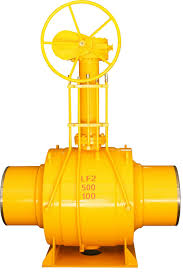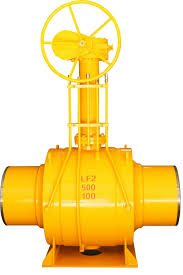Fully Welded Ball Valve

The Application of Fully Welded Ball Valve
Fully Welded Ball Valve is a pivotal component in industrial valve manufacturing processes, offering robustness and reliability. Engineered for demanding environments, it’s a cornerstone in HVAC valves types, ensuring precise control over fluid flow. Renowned brands like Rotork excel in valve solutions, offering innovations like the Rotork orbit valve parts diagram for enhanced maintenance and operation. Fully Welded Ball Valves find extensive applications in industries requiring high-pressure and high-temperature operations, such as oil and gas, chemical, and petrochemical sectors. Their welded construction ensures leak-free performance, making them ideal for critical processes where safety and efficiency are paramount.
What is a Fully Welded Ball Valve?
A fully welded valve features a forged body, reducing weight and enhancing strength while eliminating potential leak points. They serve to connect and control medium flow in various pipeline systems. Widely utilized in offshore petroleum, onshore petrochemical, urban heating, natural gas, shipbuilding, and power plants, fully welded ball valves are renowned for their reliability. By adopting forged materials and welded bodies, they circumvent potential leakage issues associated with bolts and nuts. This design ensures superior sealing, with options available in spherical and cylindrical configurations, distinguished by the number of welding seams on the body.
Features of Fully Welded Ball Valve
- The valve offers soft and hard seal seat options to suit various conditions.
- It meets NACE standards, API 607 fire tests, and includes a fugitive emission function.
- Options for single or double piston seats ensure lower operating torque.
- Lever-operated valves come with standard locking devices for added security.
- All valves feature a self-cavity pressure relief function, ensuring middle chamber safety.
- Carbon steel ball valves are coated with stainless steel at contact points to prevent sticking and torque increase.
- The PMSS seat structure provides better performance with a dual-layer seal: soft seal followed by hard seal.
Advantages of Fully Welded Ball Valve
- Reduced Leakage Risk: Welded construction eliminates potential leak points, ensuring enhanced reliability.
- Increased Strength: Forged body design enhances strength while reducing weight.
- Versatile Applications: Suitable for various industries including offshore petroleum, petrochemical, heating, natural gas, shipbuilding, and power plants.
- Superior Sealing: Offers reliable sealing due to the absence of bolts and nuts, reducing the risk of leakage.
- Operational Flexibility: Options for single or double piston seats allow for lower operating torque.
- Safety Features: Incorporates self-cavity pressure relief function for added safety in the middle chamber.
- Corrosion Resistance: Stainless steel overlay on carbon steel models prevents sticking and torque increase.
- Certifications: Meets NACE standards, API 607 fire tests, and includes fugitive emission function for regulatory compliance.
The Specifications of Fully Welded Ball Valve
| Specification | Details |
|---|---|
| Type | Fully Welded Ball Valve |
| Ball Material | Stainless Steel |
| Attachment Type | Flanged |
| Thread Standard | Not Applicable (N/A) |
| Thread Size | N/A |
| Body Material | Carbon Steel |
| Safe for Use With | Liquids and gases |
| Handle Type | Lever |
| Handle Material | Stainless Steel |
| Maximum Working Pressure | 1500 psi |
| Maximum Working Pressure | 103.42 bar |
| Operating Pressure | 0-1000 psi |

The Parameter of Fully Welded Ball Valve
- Type: Fully Welded Ball Valve
- Ball Material: Stainless Steel
- Attachment Type: Flanged
- Thread Standard: Not Applicable (N/A)
- Thread Size: N/A
- Body Material: Carbon Steel
- Safe for Use With: Liquids and gases
- Handle Type: Lever
- Handle Material: Stainless Steel
- Maximum Working Pressure: 1500 psi (103.42 bar)
- Operating Pressure: 0-1000 psi
The Operation Theory of Fully Welded Ball Valve
The operation theory of the Fully Welded Ball Valve by SKG Pneumatics Inc involves rotation of a hollow ball within the valve body to control flow. When the handle turns, the ball pivots, allowing or blocking the flow path. This design ensures quick and precise flow regulation. Regarding wafer vs lug valve, the former has a flangeless face, fitting between two flanges, while the latter has protruding lugs, allowing it to be bolted into the pipeline.
The Parameters Table of Fully Welded Ball Valve
| Component | Material |
|---|---|
| Body | Carbon Steel |
| Ball | Stainless Steel |
| Seat | PTFE or PEEK |
| Stem | Stainless Steel |
| Stem Seal | PTFE or Graphite |
| Handle | Carbon Steel or Stainless Steel |
| Bolting | Stainless Steel |
| Gasket | Graphite or PTFE |
| Bonnet | Carbon Steel |
